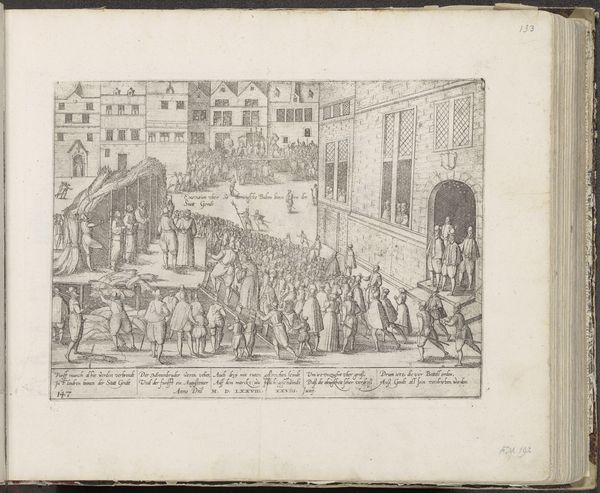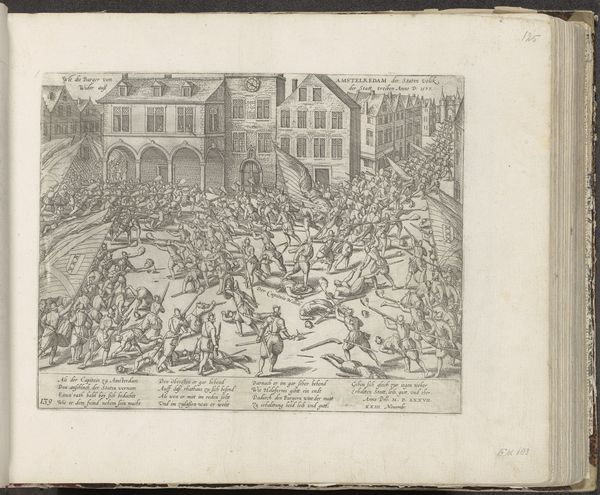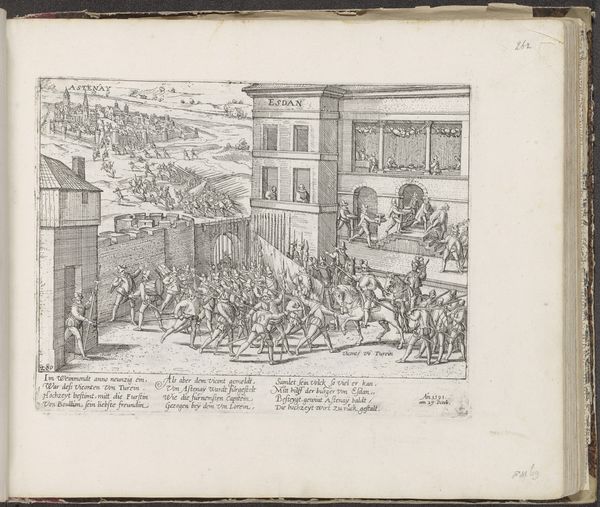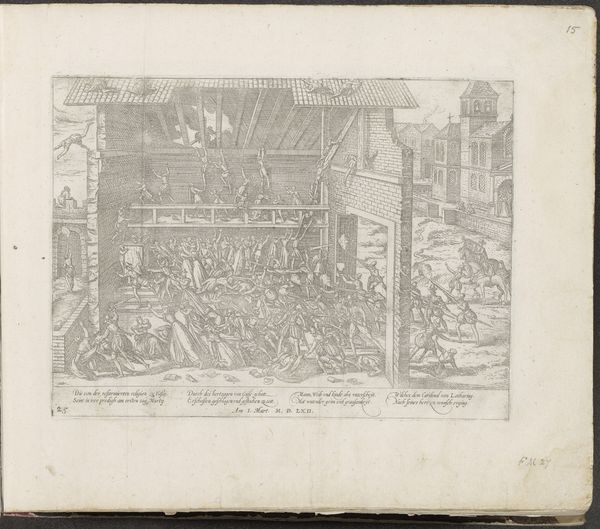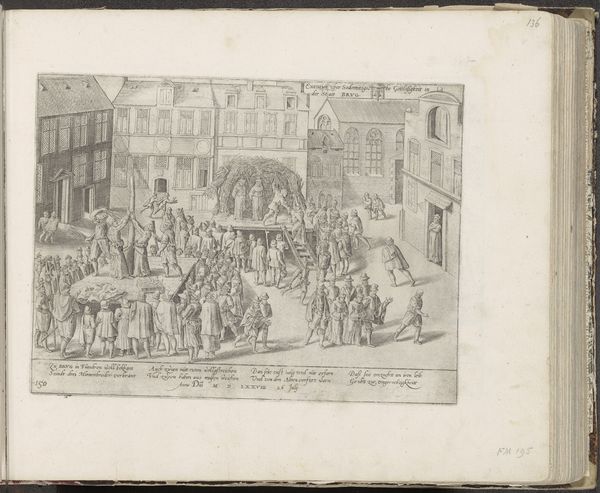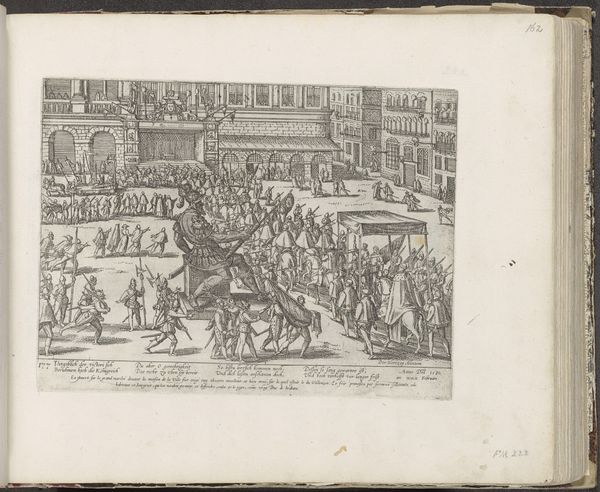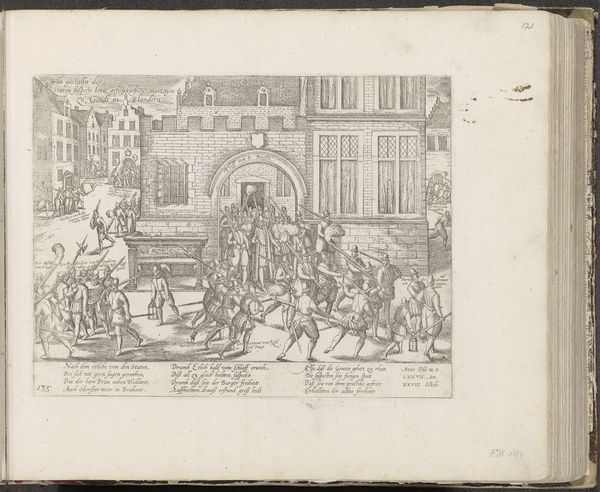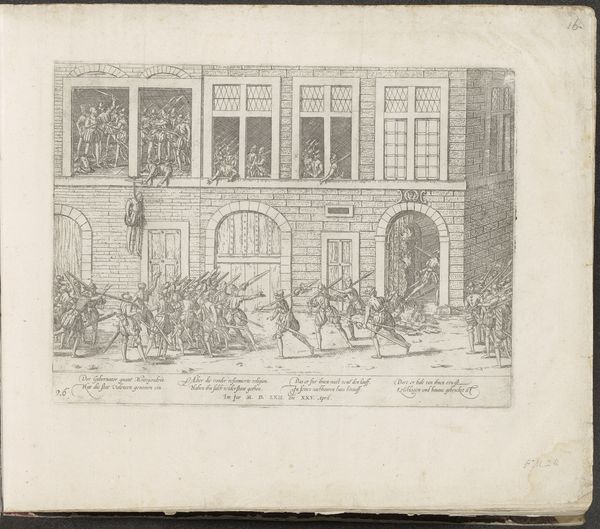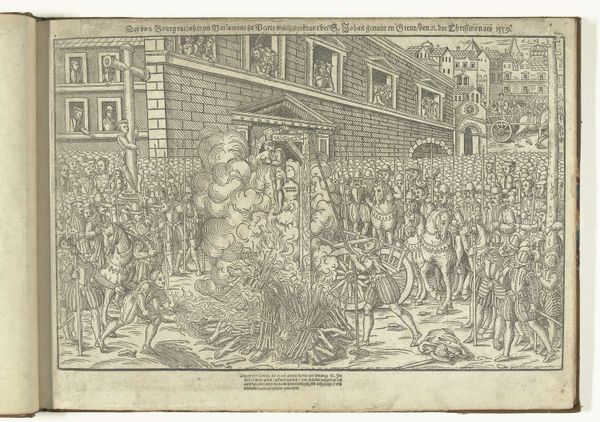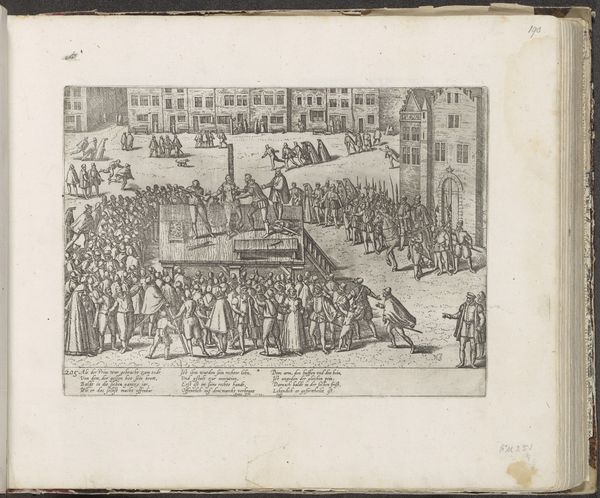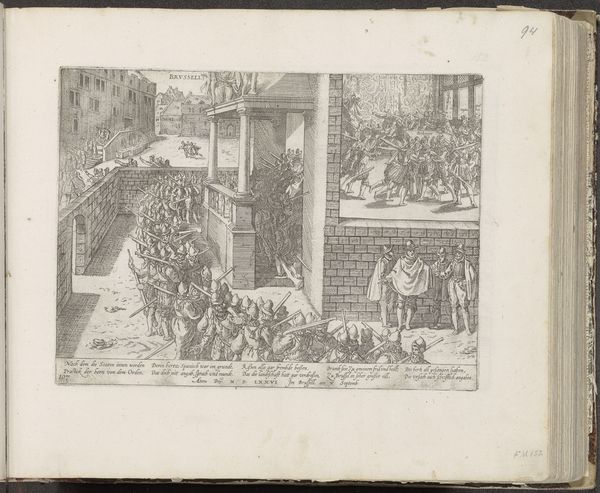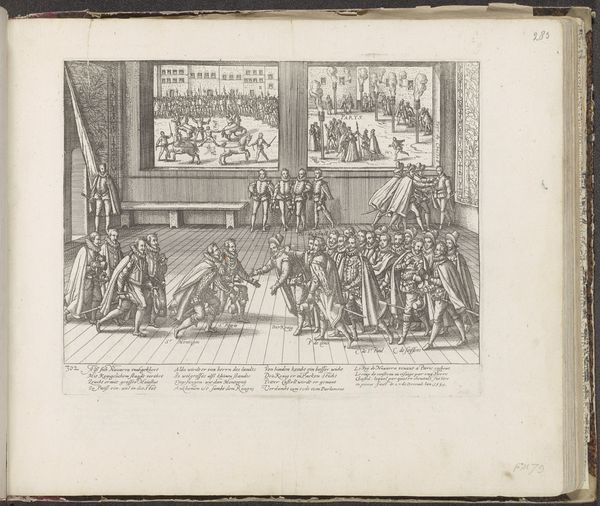
print, engraving
# print
#
mannerism
#
genre-painting
#
history-painting
#
engraving
Dimensions: height 210 mm, width 282 mm
Copyright: Rijks Museum: Open Domain
Editor: We're looking at "Terechtstelling van Anne du Bourg, 1559" by Frans Hogenberg, an engraving from somewhere between 1567 and 1571. It’s currently housed in the Rijksmuseum. The scene is quite stark and intensely busy with figures... a public execution, it seems. The longer I look, the more grim details I notice. How do you interpret this work, in light of its historical context? Curator: Ah, yes, a harrowing window into a tumultuous era. The texture alone tells a story. Can you almost *feel* the scratch of the engraver's tool, a dance between artistic precision and political statement? Anne du Bourg's execution was a flashpoint, and Hogenberg captured not just the event, but the collective psyche of a society grappling with religious reform. It reminds me a bit of a Hieronymus Bosch painting, yet less a fever dream, more an accurate visual reporting of the actual horrific dream Europe was living. Notice the gazes of the figures looking out the windows! What do you suppose they are feeling as they watch? Editor: They seem more like spectators at a show, disconnected from the reality of it all. Perhaps it was the commonplace quality of death during that period. It does seem to underscore how desensitized people became to violence. Curator: Precisely! It serves as a sobering reminder of the power dynamics at play. A dance, wouldn’t you say, between faith, power, and the unflinching hand of the artist documenting it all for posterity, reminding us of the thin veil between order and chaos. I find myself drawn in each time I study it. Editor: Absolutely! It's much more than a historical record, isn't it? More like a captured feeling. I hadn’t really thought of that interplay of power before; thanks for pointing it out. Curator: My pleasure.
Comments
No comments
Be the first to comment and join the conversation on the ultimate creative platform.

